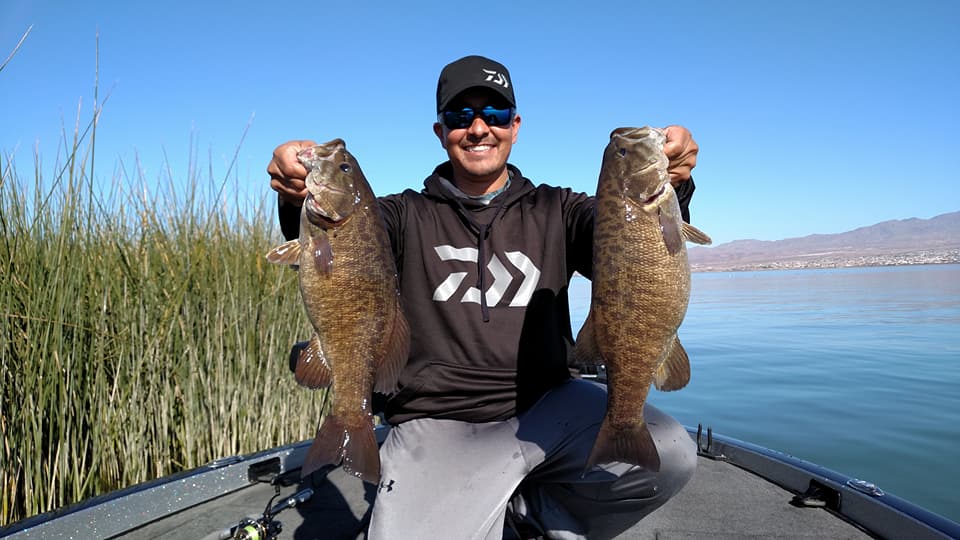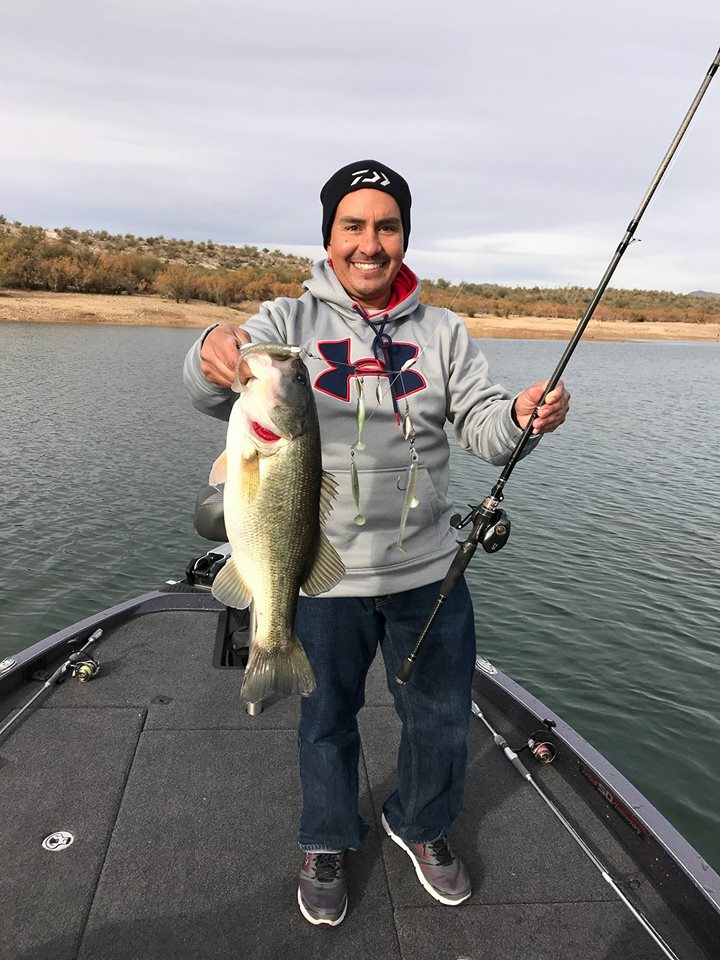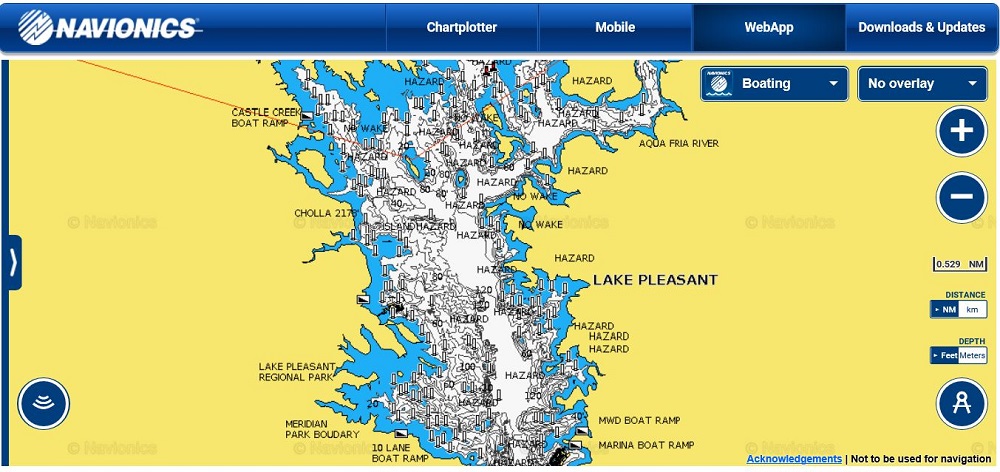 I caught up with the 2015 FLW Series Western Division Angler of the Year – Joe Uribe Jr. – to discuss the approach of locating bass in changing water levels.
I caught up with the 2015 FLW Series Western Division Angler of the Year – Joe Uribe Jr. – to discuss the approach of locating bass in changing water levels.
 A California transplant who now calls Arizona home., Uribe Jr. discussed a local area fishery – Lake Pleasant as an example.
A California transplant who now calls Arizona home., Uribe Jr. discussed a local area fishery – Lake Pleasant as an example.
According to Uribe Jr., Lake Pleasant water levels are constantly either rising or declining. Waters levels at Pleasant are largely controlled by the farmland below the lake. The lake comes up in winter and drops in the summer.
START WITH VISUAL CUES
Before he ever makes a cast, the keys for Uribe are the signs of life.
“I look for shad, birds and stripers,” Uribe Jr. began. “If you start catching stripers, do not leave the area, because the largemouth are somewhere mixed in waiting for the bait to get pushed closer to shore.”
Rising and lowering waters means that the fish are constantly on the move following the bait; so, baitfish are another visual cue.
READ RELATED: 21-Pound Striper at Lake Pleasant in Feburary
FOLLOW BAITFISH FOR MOVING BASS
Fishing through changing water levels is one of many times that Uribe Jr. use electronics to maximize his productivity. One of his focuses are the baitfish.
“I use my electronics to look for bait, while I am driving down the lake,” Uribe Jr. said. “I always go into the Humbug Arm (at Lake Pleasant) and keep my eyes on my fishfinder to locate stripers, because they will eventually push the bait to the surface or to a nearby point.”
Uribe Jr. also employs his electronics to look for smaller cuts in coves.
“These cuts are highways that bass use to follow the bait into ambush areas,” he said. “There are a lot of new bushes that grow on the bank – in cuts – when the water is lower. Bass use the brush to move around with the stripers. You catch both stripers and white bass. The bass wait for stripers to push the bait to the bank into the brush that is in the cuts.”
He uses the shading on his electronics to locate cuts that have key contour differences and the waterline. He looks for steeping cuts, and tight lines in the shading. The tighter or closer the lines are on the GPS, the deeper the water is in any given cut.
With fluctuating water levels, the lake can rise into areas of that are dry most of the year and quickly change the environment. This means some of the cuts that he targets will be newly flooded by rising water and may not appear on the mapping.
“The better cuts will have flats with a good drop off and a good depth counter,” Uribe Jr. added.
He likes to target flats that drop off to 40- to 50-feet.
BAIT SELECTION FOR TARGETING CUTS
Uribe Jr. prefers to use moving baits and targets the deeper cuts by casting past flooded brush with an Alabama rig. He will use a shad pattern lure to locate key depth changes that hold bass.
His umbrella rig of choice is a Yum Flash Mob Jr. rigged with Reaction Innovation Skinny Dippers.
Uribe Jr. expressed the importance of the proper gear for a multi-arm lure. The setup he uses for his A-rig consists of a Daiwa Zillion 7’11 MH reaction bait rod and a Daiwa Tatula 6:3 SV reel spooled with Sunline 40-pound SX braided line, with a leader comprised of 20-pound Sunline SC Sniper fluorocarbon line.
“When I get bit the rod loads up really nice as to not pull the bait out of the fish’s mouth,” he said. “It lets me control the depth of my A-rig by making longer casts and letting the bait sink to fish that are suspended in 20- to 30-feet of water.”
Next time you are faced with fluctuating waters that cause bass to roam or spread out, these tips can help you put more fish in the boat. Eliminating unproductive water with your electronics and fishing reaction baits will increase your chances of having a productive day out on the water. Good luck!
READ RELATED: Reaction Bait Rod Selection with Cody Meyer



 Advertising
Advertising